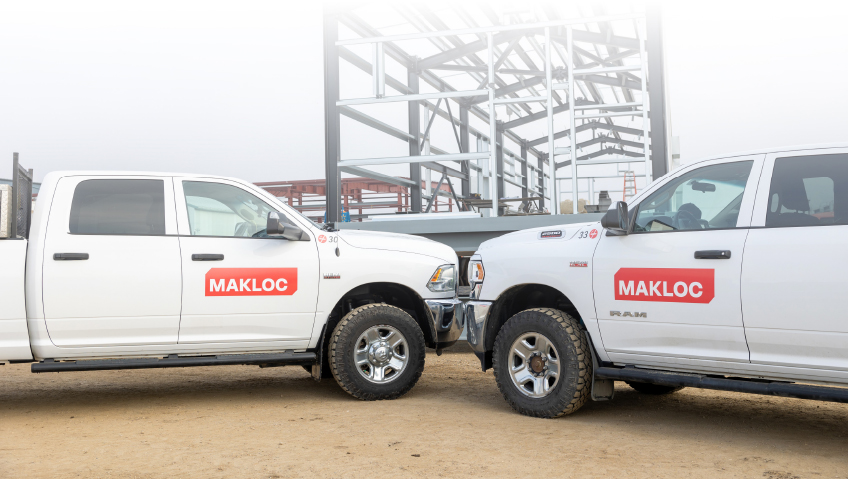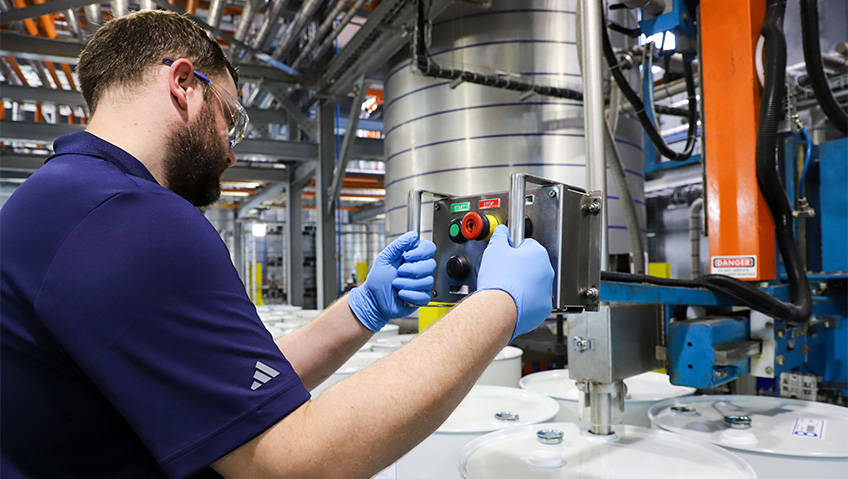For Tim Ford, owner of Great Northern Cabinetry, the concept of lean is widely misunderstood in both the general population and the business media. Often used interchangeably with Six Sigma and other forms of continuous improvement or productivity, for him it simply means creating a better, stronger, and safer company.
“It’s really important to be clear that lean is not about reducing staff or headcount or eliminating jobs,” he says. “It’s about establishing a culture of continuous improvement and building it into the fabric of the organization.”
Utilizing this methodical approach means Great Northern Cabinetry will be better at the end of the day than it was when it started, he adds. “To me, that’s the core essence of why you want to do this.”
A reliable partner since 1972, Great Northern Cabinetry has collaborated with top kitchen designers and offers an extensive product line, ample personalized options, and attention to form, fit, function, and beauty. The company works with a wide array of premium materials, custom modifications, styles, finishes, and accessories to create one-of-a-kind cabinets tailored to each client’s needs and tastes. With an impressive 70-plus years of experience under its belt, the company’s reputation is one of its greatest assets, and one that it is continually striving to improve.
“The reason we didn’t do this in the first couple of years I owned the company is we just weren’t ready for this,” Ford says. “You’ve got to have a management team that understands their role, and in my view, the role of management is to create an environment where the whole team, and the worker who’s doing the production work, is actually set up to succeed.”
Often, the way things are structured in a manufacturing setting is that the workers are there to make the management team look good, he adds, while the reality couldn’t be more different. Management, he believes, is there to create an environment that sets the employee up for success. Initially, however, GNC didn’t have the right people in place or the right mindset.
“I think we’re there now,” Ford says. “As we’ve made some organizational changes and brought in some people with different experiences over the last 18 to 24 months, we’re in a much different place and are ready to do that today.”
Setting employees up for success is vital for GNC. The term ‘servant leadership’ gets used a lot in many organizations and some embrace it and some don’t, says Ford. “You want to have an organization where the folks who do the work, who come to work every day, feel like they can win. For many organizations, getting that mindset is just not easy to do; it’s very hard. We all want success, but getting there is sometimes a little bit more challenging.”
The second ingredient, he says, is to have robust information systems capability, and GNC has implemented new software products in the last 12 months that have boosted its capacity in that area.
In order to achieve success and implement lean at GNC, there are three flows being worked on. The first is information flow—the documentation that people use, in GNC’s case, to build a cabinet. Is it right? Is it precise? Is it timely? Is it accurate?
“That’s got to be right, and making sure we give people clear documentation, so they know exactly what they’re supposed to do when they’re supposed to do it, is really critical,” Ford says. “It’s very hard and probably one of the things our company in particular has struggled with.” Cabinetry is very technically complicated and the details of what needs to be produced must be written in such a way that they’re very precise.
The second flow is material flow, ensuring the right material shows up to the right department or worker at the right time. GNC’s products go to several departments simultaneously on the production floor—framing and doors and drawers. If workers aren’t given the right material to build in the right way at the right time, then they’re standing around looking for something to do or building the wrong thing.
It’s analogous to the nurse and the surgeon in an operating room, he adds, where the surgeon is never in the closet looking for the scalpel; the nurse is right there to hand the surgeon the scalpel.
“We’re in the process of implementing a supermarket concept in our plant so all of our raw materials are housed in a supermarket,” he explains. “They will ultimately be delivered from a central location to the user in the order they need it when they need it. We have about 240 material parts we’re putting into the supermarket and building a process to be able to do that, which is completely different from the way we do it today.”
Process flow is also a vital step. Each of the departments needs to complete its work in concert with one another. Finally the product gets painted or otherwise finished, and ultimately assembled. “It’s a little bit like choreography or a ballet,” says Ford. “Managing that choreography through the factory floor is really, really critical. We’re working on those three things right now to get more synchrony into our process.”
Employees, of course, play a huge role in the implementation of these processes. GNC is collecting data with the team members who are in the work areas on the floor and using their knowledge and information to help the company figure out what the right solution is for the particular problem they’re trying to solve.
“Some are wondering why we’re making these changes,” Ford says. “‘What are they doing? Why is this group of people out on the floor studying this? Why are they timing me? Am I being critiqued?’ But once you start to build trust with folks on what you’re doing and why, and you involve them in the process, it builds.”
GNC is at that phase right now, moving from skepticism to buy-in and no longer facing resistance, because workers know some things have to be done differently in order to scale the company. And when a successful change happens to one department, other departments want those benefits too.
“What does it mean going forward? To me, it’s the means to an end,” says Ford. “It’s really about creating that culture of continuous improvement. But more than that, it’s creating a safer workplace, improving product quality, improving on-time delivery, reducing costs, and improving morale.”
Done properly, lean implementation creates a safer workplace, he adds. Every activity GNC undertakes has a safety component to it. When examining a process, the team will look at the ergonomics of that process or the way material moves or machines are guarded. In the process of making an improvement, they want to make that process safer for the worker as well.
“That builds back to the question of, do employees buy into the approach? That builds trust if they know that you’re doing this not just to make another dollar, but to also make their work life better. There’s a real quid pro quo that happens as a result of that.”
For Ford, success stems from implementing lean processes. If things are flowing and functioning as they should, safety will improve and there will be fewer quality defects. If there are fewer quality defects, that means the amount of time spent on rework will be lower. “It’s about the outcome of the improvements you’re making in all areas of the business,” he says. “It’s really trying to make sure we’re clear on what leads to success: safety, quality, delivery costs.”
Along with this ongoing shift, GNC has been very aggressively going after dealers in order to offset some of the housing start growth challenges, growing its new dealer base by three times over the first quarter of 2023.
“We’ve done that in three different ways: we have new reps in new territories; we have a digital marketing campaign that we’ve put out; and we have a new and improved website that we launched last fall,” says Ford, all of which have drawn new dealers. “My goal is to double the number of active dealers we have in the next few years. I think we can grow our dealer base pretty significantly in a relatively short period of time.”
All of these processes, goals, and successes are something Ford likes to refer to as the “steak and the sizzle” of the company. Producing on time, delivering on time, and producing without defect is the steak. And if you do that, everything else is the sizzle. “You’ve got to be really good at the basics,” he says. “That’s one of the keys to differentiating ourselves, is to make sure we’re always and reliably different than the competition.”
He plans to continue to build on that foundation. “There are things we can do once we’ve got that foundation built to leverage data analytics, technology, innovation,” he says. “AI is coming in fast, and how it plays in our industry and what it means for us, I don’t know, but I can already envision applications where we might be able to use AI for product or employee training.”
Going forward, embracing new technology and innovation will be key for people to succeed in this industry, he adds—but it’s all going to be built on a solid, lean foundation.
“I’m a sales guy,” says Ford. “That’s what I’m all about. But ultimately, it’s the product engineering and manufacturing that’s the underpinning of it, that’s got to be done properly. I love doing the sales part of it, but if we don’t get the core of it right, it’s not going to be worth anything.”






